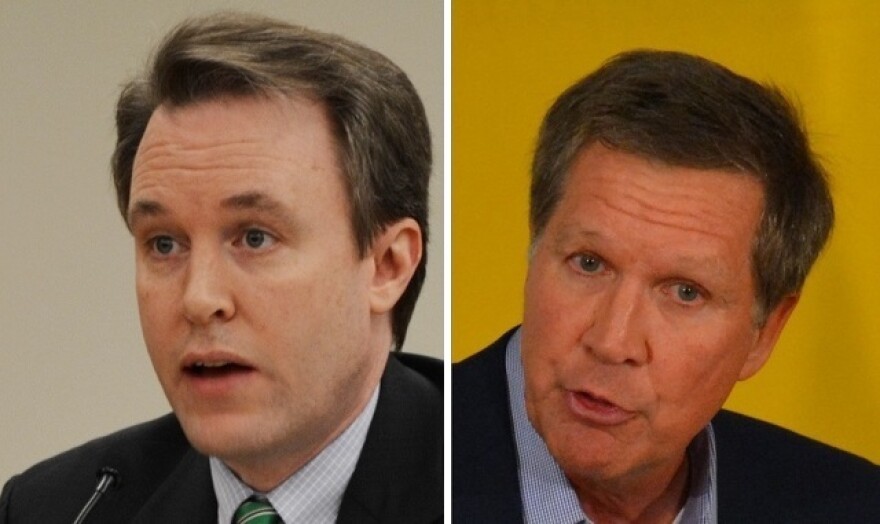The Quinnipiac poll of likely voters showed Democrat Ed FitzGerald trailing Republican incumbent John Kasich by 22 points. FitzGerald admitted it’s been a tough campaign, and said the main reason for the chasm in that poll is Kasich has raised five times the money that he has.
“That’s the difference. And they’re running a very well-funded campaign, in part because they’ve taken state policy and they’ve put it up for sale to the highest bidder and that has helped them raise campaign funds," FitzGerald said. "So, I think it’s tough. But I can tell you that I’m constantly in touch with volunteers around the state. They’re very motivated as they’re going door-to-door and talking to voters, they’re getting very good response. And so we remain hopeful and committed.”
In 2010, Kasich beat incumbent Democrat Ted Strickland by 2 percent. It’s easy to remember that most recent race and think governor’s races are close contests. But historical data shows five of the last eight governors’ races have been decided by almost 20 points or more.
Mike Dawson has put numbers from hundreds of Ohio elections onto a website, ohioelectionresults.com.
“We have a history in recent times of big margins in the governor’s race," Dawson said.
Dawson’s website is not political, though he is – he was a top aide to former Republican Gov. and US Senator George Voinovich, who was the winner in the most lopsided governor’s race in Ohio history, the 1994 contest with Democratic State Sen. Rob Burch, who lost to Voinovich by 46 points.
But another expert in Ohio elections history offers this cautionary comment.
“Well, the state motto is ‘With God, All Things Are Possible,'" said Tom Suddes, a columnist for the Cleveland Plain Dealer and a journalism professor at Ohio University in Athens.
He wouldn't say the race is over since early voting hasn’t yet begun and there’s still a month to go before election day. He suggested a major scandal could rock the Republican vote.
But he and Dawson both said it’s unlikely this year’s results will be in the Voinovich-Burch range. And both also said they’ll be watching for results from the four down-ticket races for attorney general, auditor, secretary of state and treasurer. In three of those races, the Democratic candidates are keeping pace with the Republican incumbents, though the Republicans have more money overall.
Dawson offered this note:
“Republicans have swept all the statewide offices in four of the last five elections," he said. "So if they were to sweep them again, it would be five out of six. So that’s not an anomaly in recent Ohio history.”
Republicans won all five of the state's top offices in 2010, in 2002, 1998 and 1994. Democrats won all but the auditor’s office in 2006, and had the winning candidates in all but the governor’s race in 1990.
There are more registered Democrats in Ohio than registered Republicans, but Dawson and Suddes both noted that the numbers show Democratic voters simply don’t turn out in non-presidential years in the same kind of numbers that Republican voters do.
But Suddes said looking back even further in time, there is hope for Democrats who might be despairing at this latest poll. He noted that in 1982, there was only one Republican in elected statewide office: a Supreme Court justice.
“And so we saw in the space of about 10 or 15 years, a total transformation of competitiveness in the statewide offices and in on the Court," Suddes said. "That could happen the other way. I mean, people do, there are tides to these things and it’s hard to say why they happen the way they do.”
There is one other team on the ballot in the governor’s race – the Green Party candidates Anita Rios and Bob Fitrakis. The Libertarian Party of Ohio’s team for governor and lieutenant governor was knocked off the ballot earlier this year because of problems with petitions. But the most an independent or third party candidate has received in the governor’s race in recent history is around 2.4 percent -- enough to possibly make a difference in a close race but not in a runaway one.




